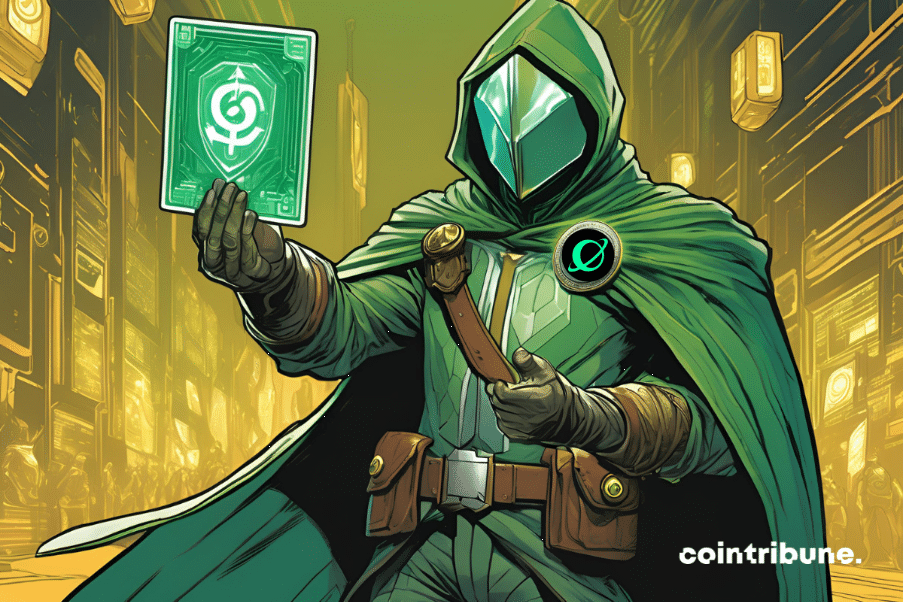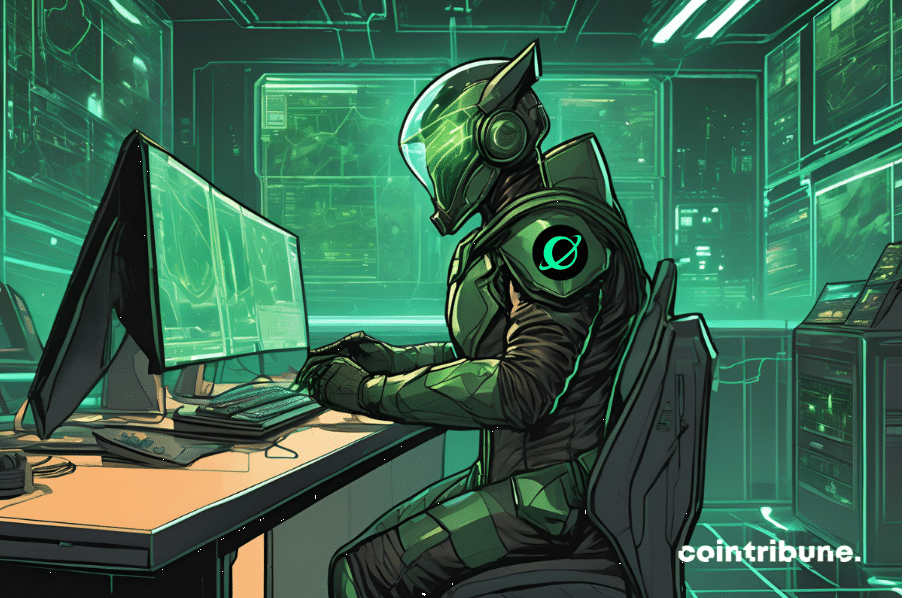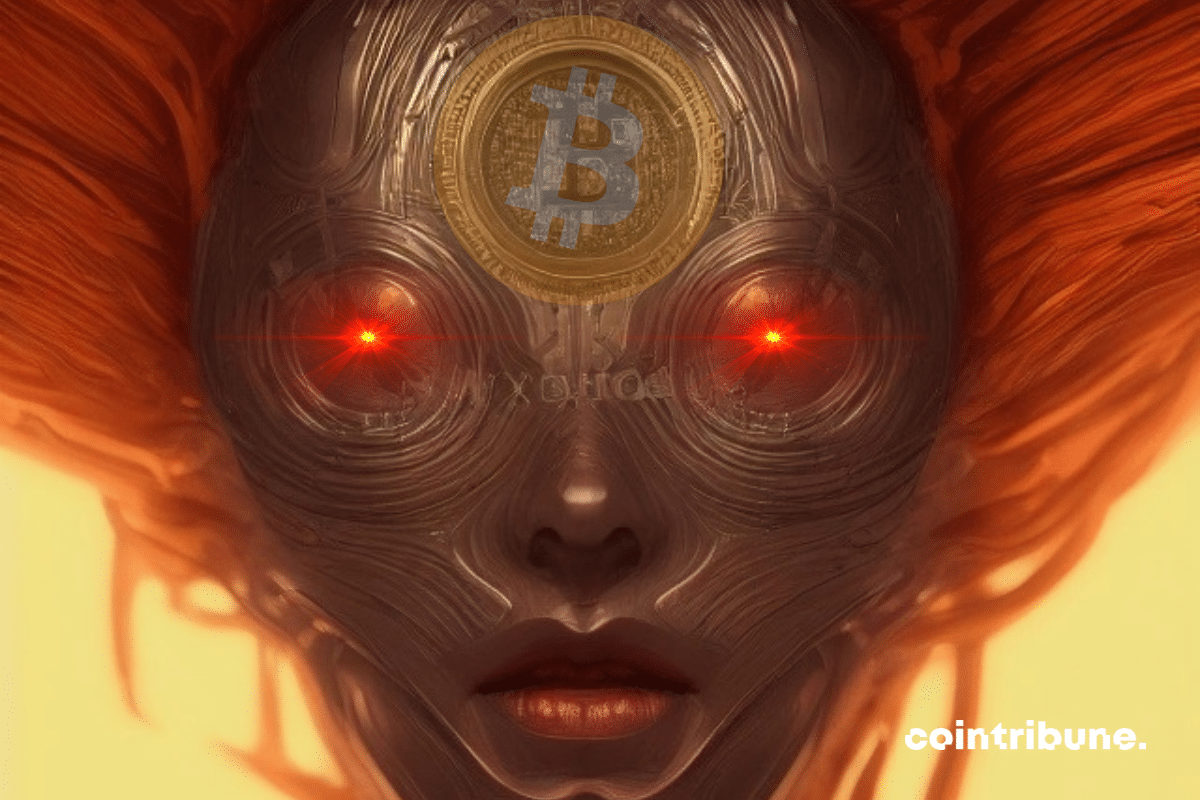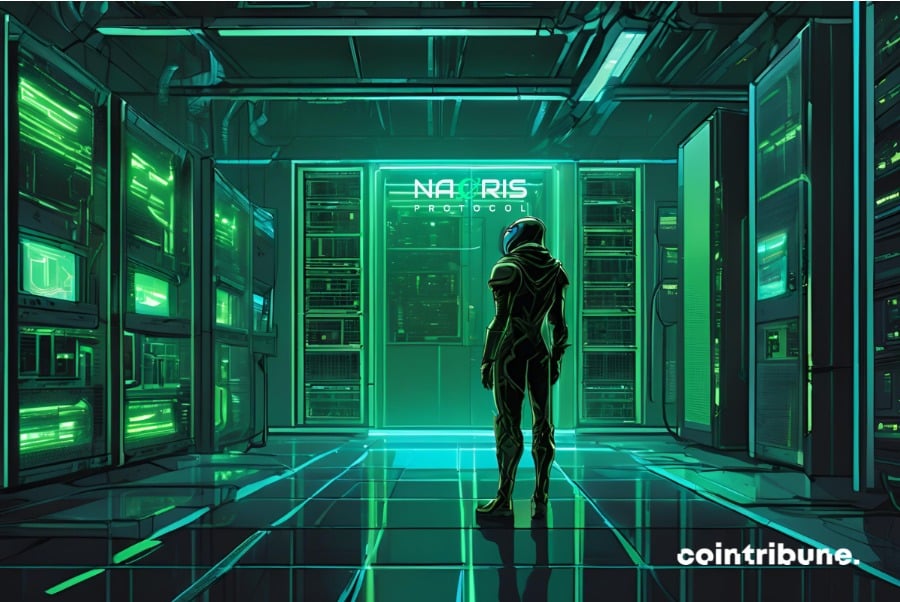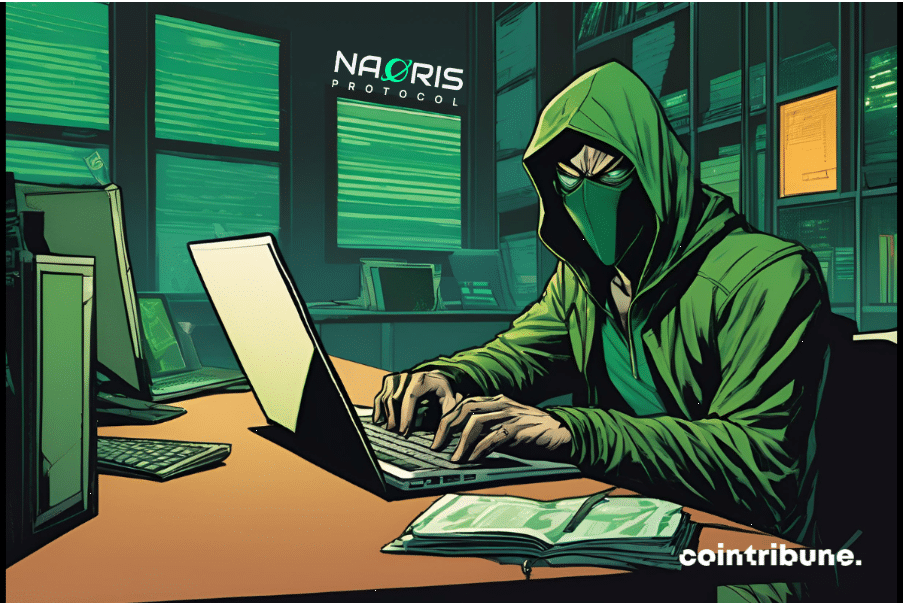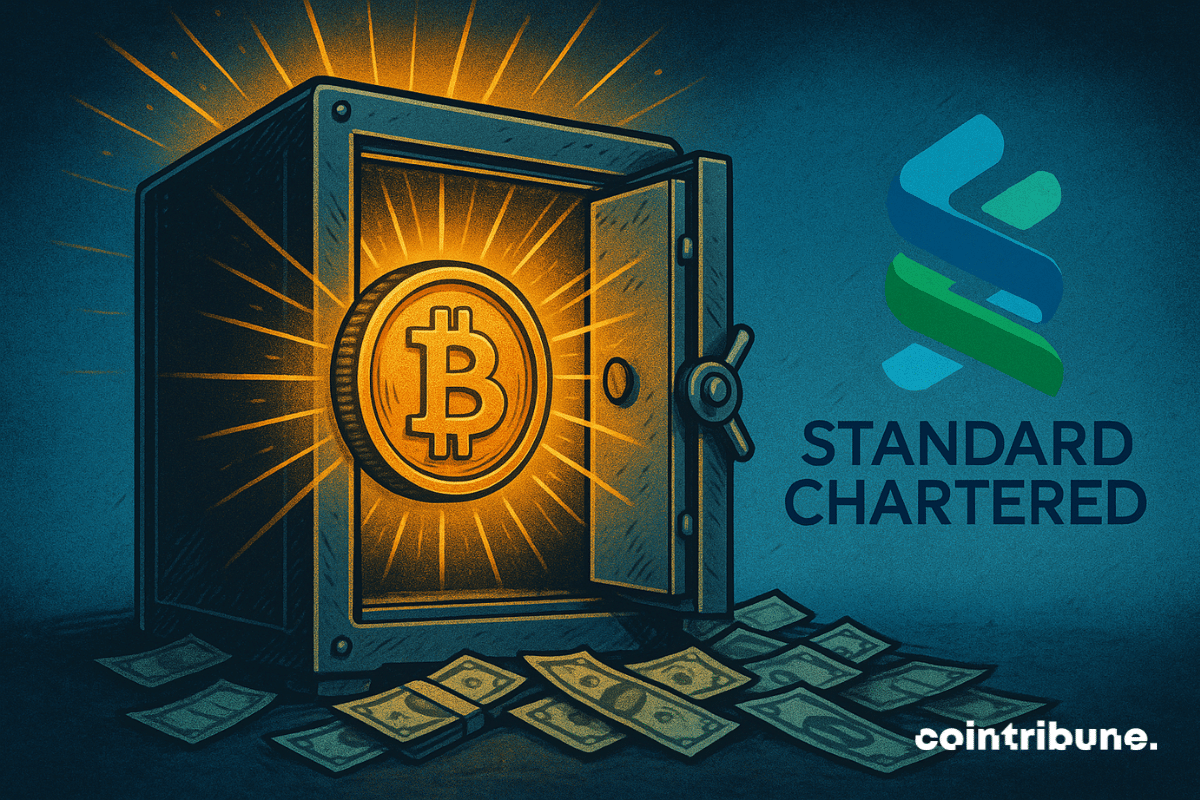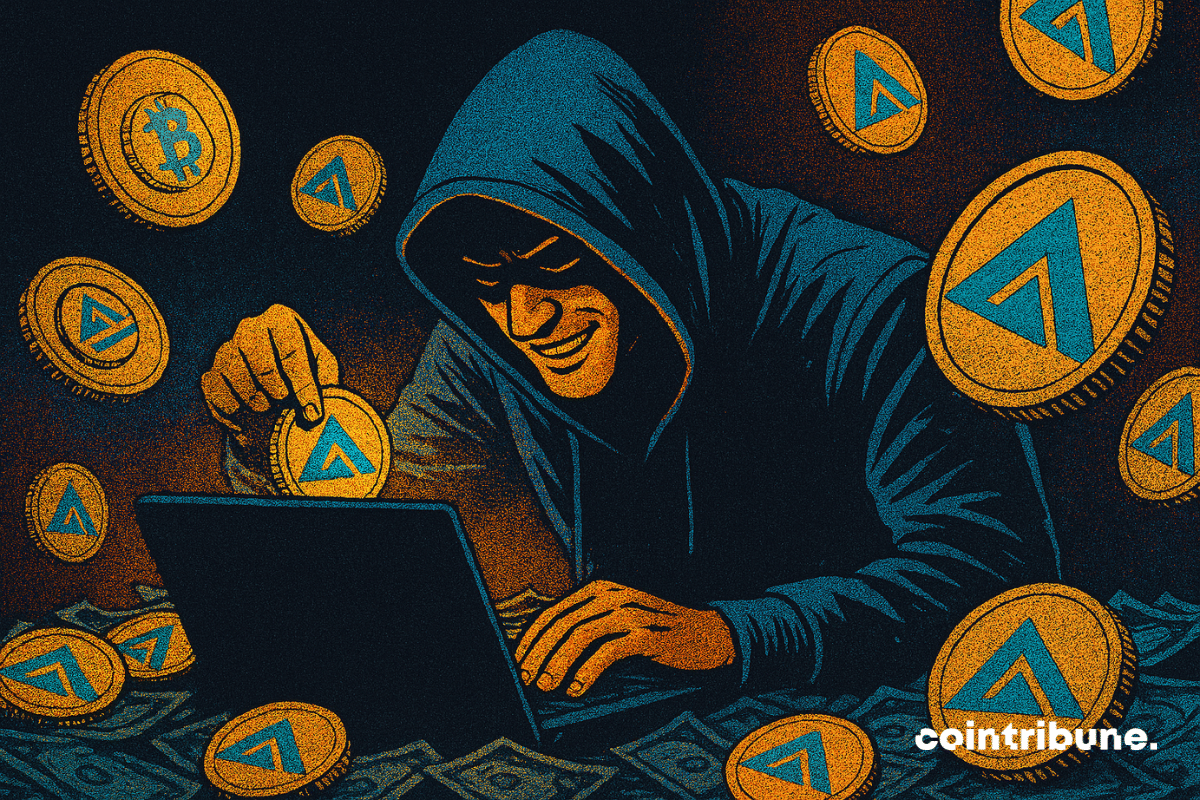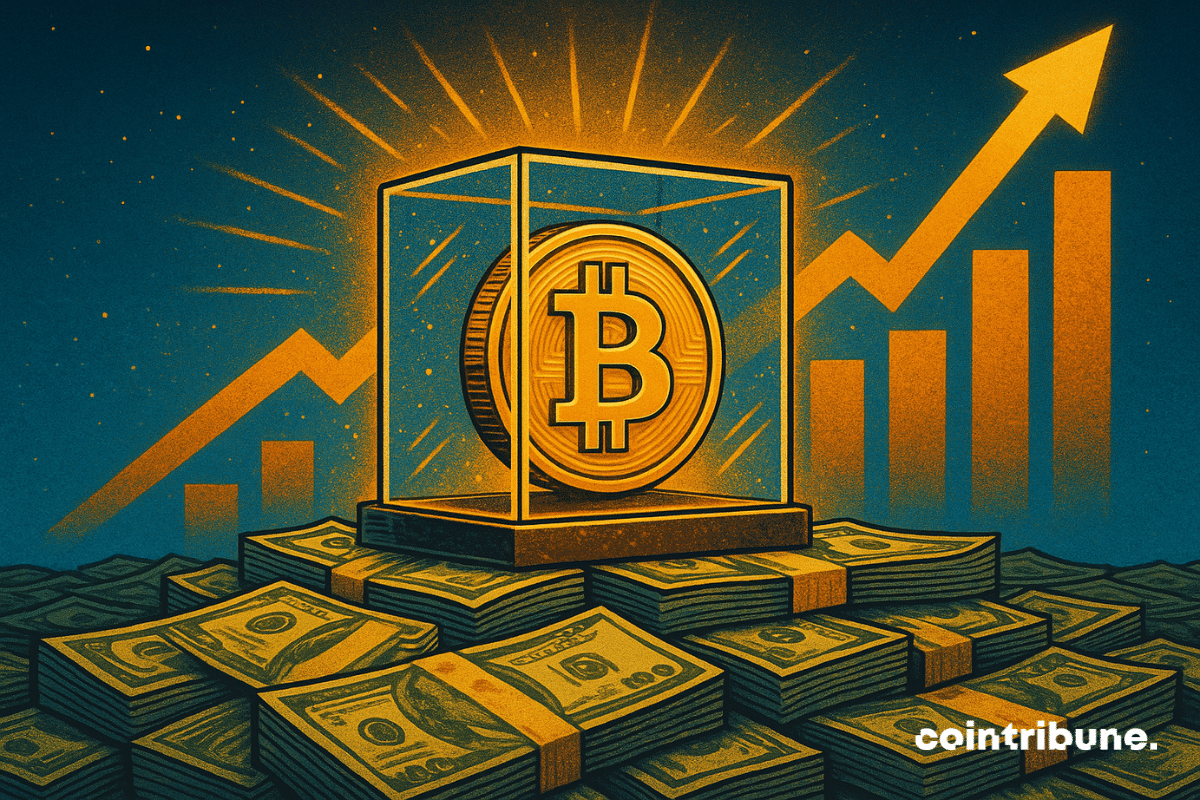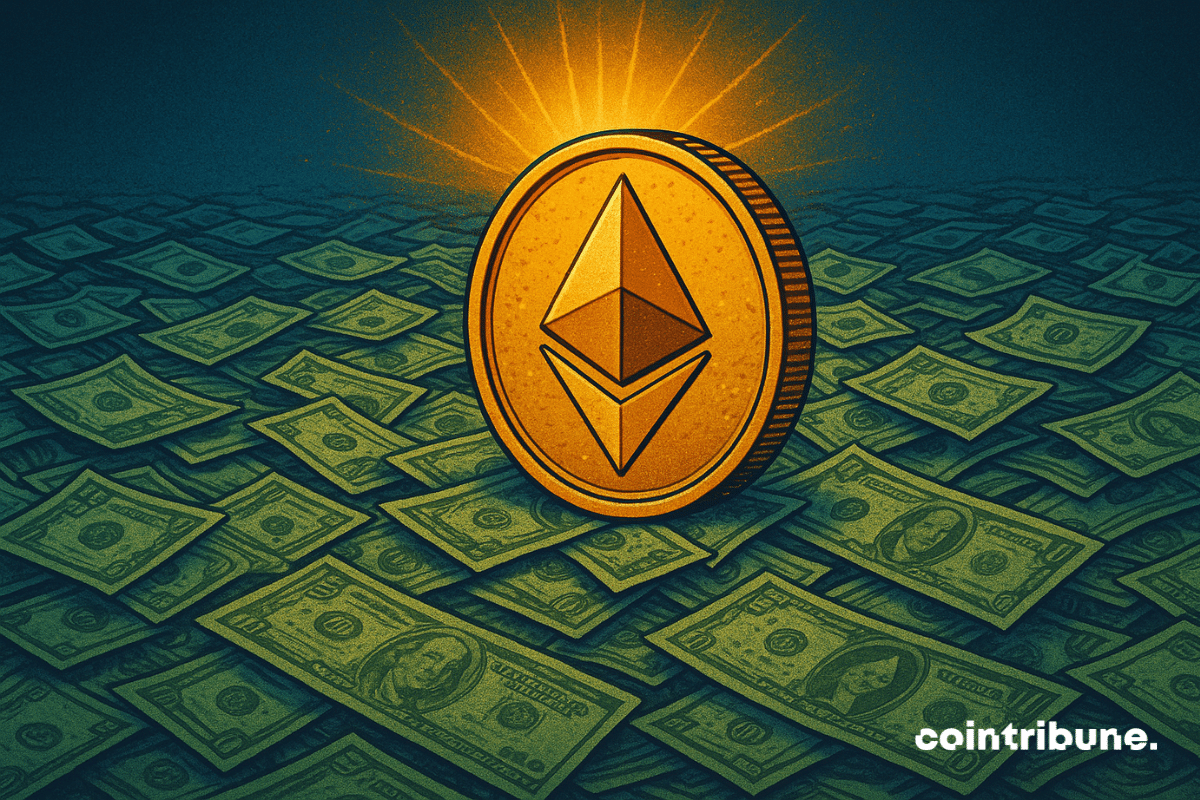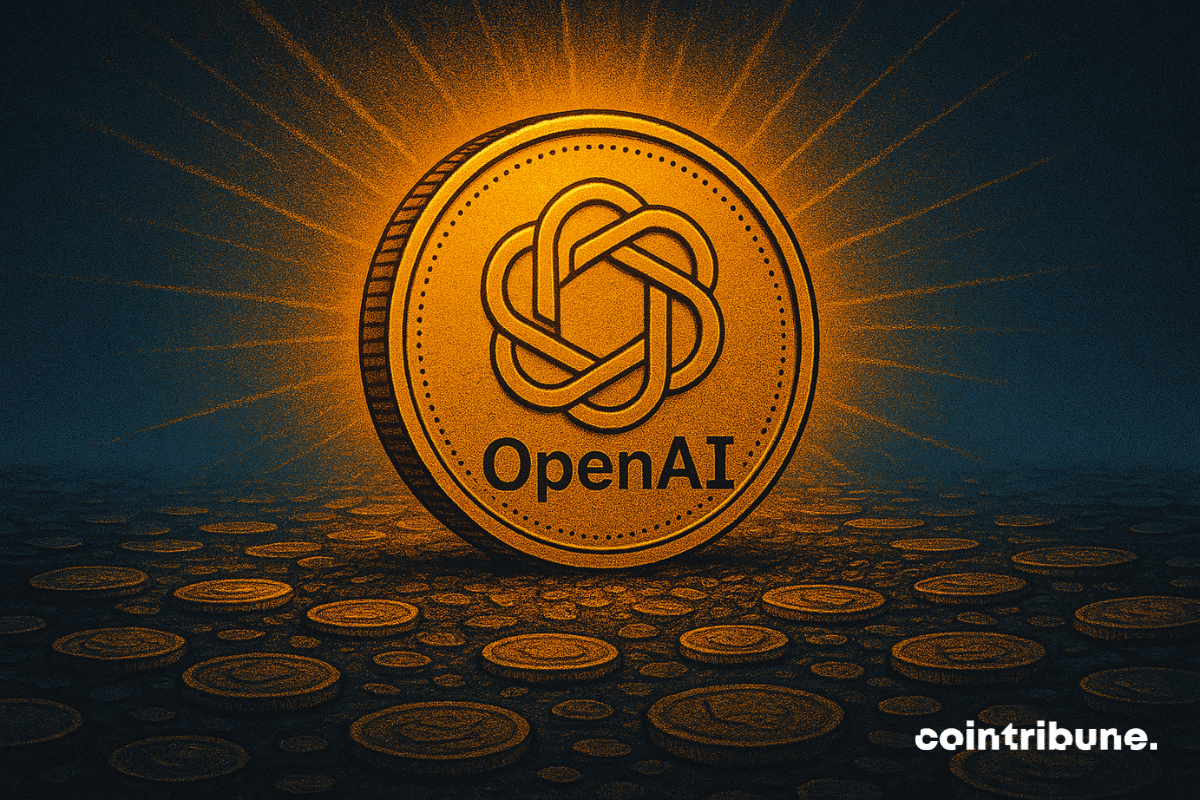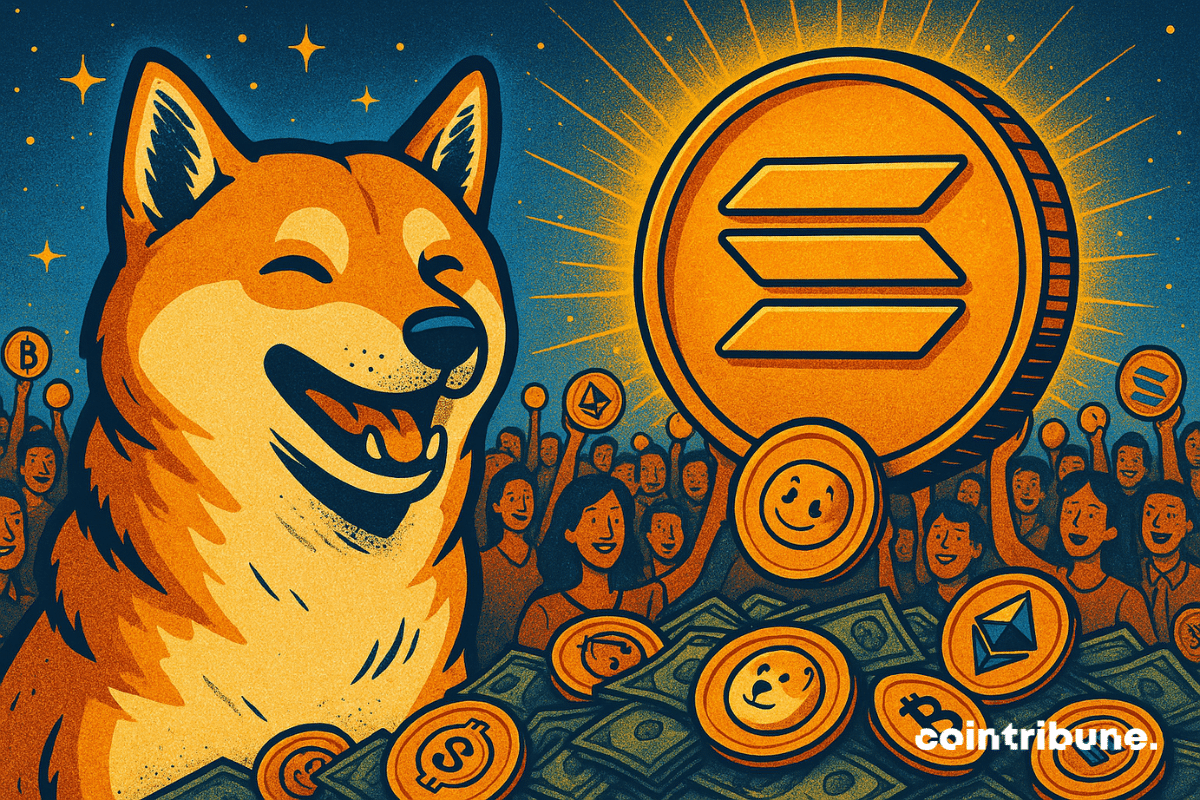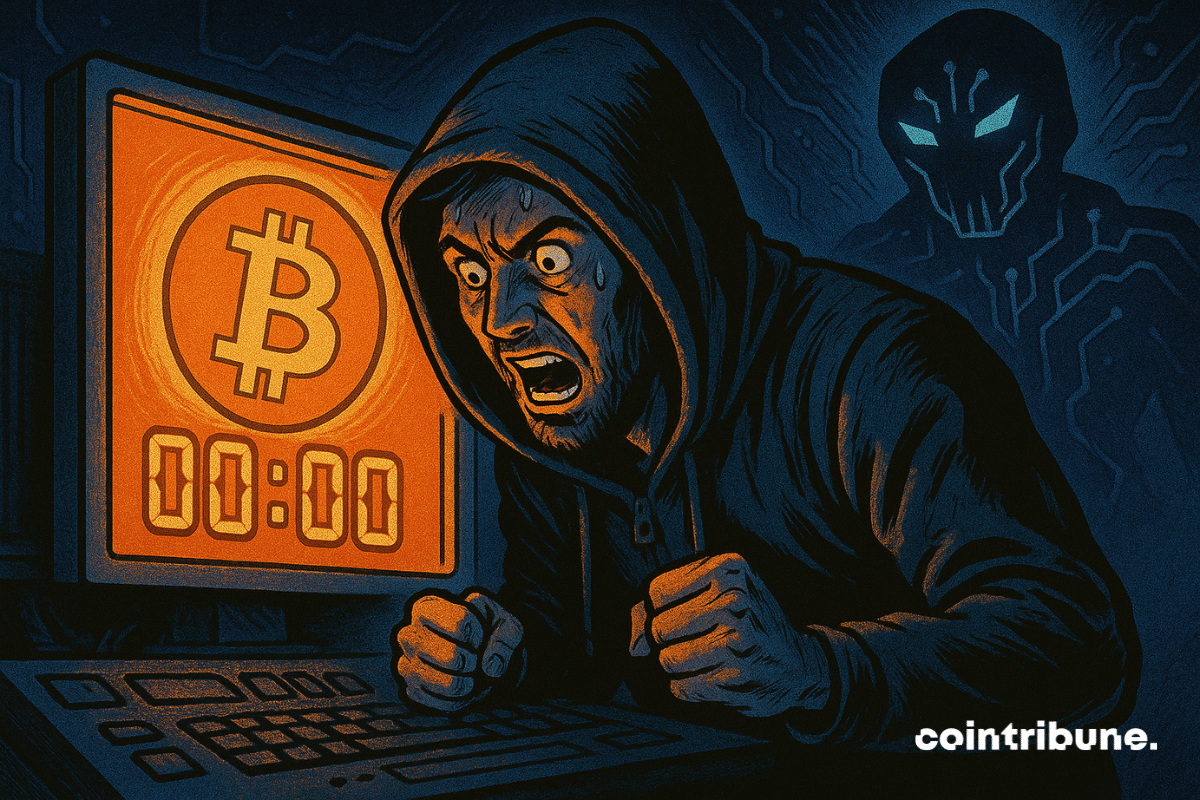The cryptocurrency market continues to attract a growing number of investors seeking innovation and returns. Yet, each new attack or exploited vulnerability highlights the fragility of the ecosystem. Security remains a non-negotiable condition for sustaining trust and enabling mass adoption. A new vertical is emerging in response to these challenges: cybersecurity cryptocurrencies. These assets combine utility, resilience, and direct responses to the structural weaknesses of Web3. Among them, Naoris Protocol stands out for its infrastructure-first, decentralized, and post-quantum approach. This article explores current market risks, the importance of native security, and Naoris’s strategic role in this transformation.
Learn
The arrival of quantum computers isn't just shaking the foundations of global cybersecurity, it's triggering a seismic collapse that could happen any day. These machines, advancing at a pace that has shocked even the most conservative experts, now threaten to obliterate classical cryptographic systems within months, not years. 'The quantum earthquake is no longer a distant rumble, the ground beneath crypto is already cracking,' declares Professor Wei Chang of the Quantum Security Alliance. 'By this time next year, we could witness the complete compromise of blockchains, digital identities, and sensitive data on a scale unprecedented in digital history.' The window to prepare is closing with alarming speed. Centralized architectures, still dominant, show their limits when faced with these emerging risks. They concentrate vulnerabilities and lack both continuous validation and true resilience. In this context, a new generation of infrastructure is required. Naoris Protocol embodies this shift, going beyond traditional DePIN by introducing a post-quantum infrastructure layer called Sub-Zero. This architecture sits beneath Layer 0 and secures the entire digital ecosystem, from Web2 to Web3, through an autonomous, resilient mesh.
Web3 is expanding at breakneck speed, even as it races headlong toward a quantum cliff edge. 'The Web3 ecosystem is like a magnificent castle built on sand, with a tsunami visible on the horizon,' warns Dr. Samantha Torres, Director of the Quantum Cryptography Institute. 'Quantum systems capable of devastating current blockchain security could emerge as soon as Q3 2025, perhaps even sooner.' This imminent threat makes today's sophisticated attacks look like child's play. Smart contracts, bridges, and DEXs aren't just vulnerable targets, they're primed for complete compromise within months, not years, as quantum computing progress has shattered all previous timelines. Current cybersecurity solutions fail to offer long-term protection, relying on periodic audits and tools poorly suited for decentralized environments. To enable mass adoption, Web3 must integrate native, continuous, and future-proof security. Naoris Protocol offers a structural solution. It deploys a post-quantum, decentralized, verifiable infrastructure that goes beyond traditional DePIN. It introduces security embedded directly into the core architecture of Web3.
In the world of crypto, the name Satoshi Nakamoto remains a source of intrigue. No one knows who is behind this pseudonym, but his legacy continues to fuel theories, fantasies, and passionate debates. This article revisits the birth of bitcoin, the mysterious disappearance of its creator, and the technological and ideological footprint he has left on the entire crypto world. You will also discover the most credible profiles behind the name Satoshi Nakamoto, the extent of his fortune in bitcoins, and how his anonymity has strengthened the spirit of decentralization at the heart of the Bitcoin network.
Cyber threats are multiplying in a digital world where everything is becoming interconnected. Web2 and Web3 now share the same vulnerabilities: centralized cloud infrastructures, poorly secured connected devices, and cryptographic algorithms that are becoming obsolete in the face of quantum computing. Traditional solutions are no longer sufficient. They fail to monitor, protect, and validate in real time. Naoris Protocol offers a new approach. Its Decentralized Post-Quantum Infrastructure operates beneath blockchain layers to secure both Web2 and Web3 at their core. This article explores today’s cybersecurity challenges, explains the concept of decentralized security, and details the technical pillars and strategic advantages of the Naoris Protocol model.
Cyber threats are multiplying in a world where digital systems are becoming increasingly interconnected. Traditional architectures, based on implicit trust and centralized points of control, are no longer sufficient to protect data and critical infrastructures. The Zero Trust model emerges as a clear response to these flaws: it relies on continuous verification, granting no user or device default trust. To go further, blockchain offers an ideal foundation. With its Sub-Zero architecture, Naoris Protocol turns this promise into reality. It creates a decentralized, post-quantum, self-validating infrastructure capable of securing both Web2 and Web3 systems in real time, without a single point of failure.
It is no longer if, but when. Quantum computing will soon be a reality, and it's time to take stock. How many bitcoins are currently at risk?
JPMorgan Chase is reportedly exploring a new lending product that would allow clients to borrow against their crypto holdings. According to sources cited by the Financial Times, the U.S. banking giant is in internal discussions to launch crypto-collateralized loans, potentially as early as next year. The plan would let clients use cryptocurrencies such as Bitcoin, Ethereum, or even crypto-focused ETFs as collateral in exchange for cash or credit. While still in its exploratory phase, the product would be JPMorgan’s clearest signal yet that it is taking crypto seriously.
Tensions are rising within the Cardano community as a major delegated representative, known simply as “Whale”, has launched a critique of founder Charles Hoskinson and Input Output Global, accusing them of wasting millions in ADA on underdelivered promises. Whale, who reportedly controls around 6 million ADA worth of delegated voting power, declared a blanket rejection of all future proposals from IOG.
A new survey by Bitcoin mining platform GoMining shows a surprisingly large knowledge gap among crypto users, one that may be slowing mainstream adoption. Despite being valued at over a trillion dollars, Bitcoin is still a mystery for most of its users. The GoMining survey, conducted among over 2,600 respondents across North America and Europe, found that more than 70% of Bitcoin users don’t feel confident explaining how it works.
Pakistan and El Salvador are joining forces when it comes to crypto. Bilal Bin Saqib, CEO of the Pakistan Crypto Council, met with El Salvador’s President Nayib Bukele in San Salvador. The goal was to establish closer cooperation on digital assets, as both nations double down on Bitcoin adoption.
Standard Chartered has taken a major step in crypto by launching a fully regulated spot trading service for Bitcoin and Ethereum, specifically targeting institutional clients. This move makes it the first globally systemically important bank to offer direct access to dollar-paired crypto spot trading, opening the door for corporates, investors, and asset managers to gain exposure to digital assets under the umbrella of a trusted banking institution.
It feels like 2021 again. Cardano is one of the best performers among blue chip coins, and the 10th largest cryptocurrency by market cap has surged 29% in just seven days, reaching $0.747 at the time of writing. In the past 24 hours alone, it added nearly 4%, driven by a wave of bullish momentum across the altcoin market.
The hacker behind the $40 million GMX exploit has begun returning the stolen crypto after accepting a $5 million white hat bounty offered by the GMX team.
In just a year and a half since the launch of the first U.S. spot Bitcoin ETFs, institutional investors have poured over $50 billion into crypto through regulated financial products. The message is clear: Bitcoin is going mainstream, and it's happening fast.
The crypto market is entering an important phase, with Shiba Inu, Ethereum, and Dogecoin all showing serious volatility. Traders are closely watching these coins as technical patterns hint at potentially explosive price moves, if the right conditions line up.
According to data from Token Terminal, over $6 billion worth of tokenized assets now live on the Ethereum blockchain. That’s not theoretical DeFi liquidity, but real-world funds, from some powerful names in global finance.
Robinhood’s rollout of tokenized shares “linked” to OpenAI set off a large debate last week. A broader discussion in crypto markets about the future of tokenized private equity, and whether retail investors actually want it.
Bitcoin may be trading near all-time highs, but on-chain activity shows very different things. Despite BTC hovering around $109,000, the network’s mempool, the queue of unconfirmed transactions waiting to be included in a block, is almost empty. As of Saturday, fewer than 5,000 transactions were waiting in line. That's dramatically lower than the 150,000+ seen during Bitcoin’s last major run-up in late 2024.
After a promising start to June, Chainlink’s price momentum has slowed significantly. It's to break past the $15 resistance level. Despite a short rally that brought it from $13 to nearly $16, the token has pulled back sharply, dipping as low as $11.20 before recovering slightly.
Solana’s meme coin market is on a tear. A wave of low-cap, community-driven tokens is creating immense volume in the Solana ecosystem. The best performer is $USELESS, a satirical token that’s done anything but live up to its name, with its price rising by over 85% this week and 209% in the past month.
The quantum threat is not for tomorrow morning, but recent breakthroughs suggest that the Bitcoin community made the right move to initiate major maneuvers.
The International Monetary Fund has rejected Pakistan’s proposal to subsidize electricity for crypto mining operations, citing concerns over market distortions and energy infrastructure strain.
A new organization called the Ethereum Community Foundation (ECF) has launched with a clear mandate: support institutional-grade Ethereum infrastructure, drive long-term ETH value, and correct what it sees as strategic missteps by the Ethereum Foundation.
While Bitcoin is flirting with the $110,000 mark, new data shows whale supply has dropped to its lowest point since 2019, signaling a wave of profit-taking that could threaten the rally’s momentum.
On June 17, the U.S. Senate passed the GENIUS Act, short for Guiding and Establishing National Innovation for U.S. Stablecoins Act, by a 68-30 bipartisan vote. If passed by the House and signed by the President, the bill would introduce the first comprehensive federal framework for regulating stablecoins in the United States.
Valeria Fedyakina, a 24-year-old Russian influencer known online as “Bitmama,” has been sentenced to 7 years in a prison colony after running a major crypto scam that stole over $21 million from investors. Russian prosecutors say some of the stolen funds were used to support Ukraine’s military, a claim that adds a geopolitical twist to this case.
The U.S. is facing a serious financial challenge. The national debt is now over $36 trillion, and rising interest rates are making it more expensive to borrow money. Much of the debt that was issued during the COVID-19 era is about to roll over, meaning it needs to be refinanced at today’s much higher rates.
The Federal Reserve just made a big change that could make it easier for crypto companies to get bank accounts. On Monday, the Fed said it would no longer use “reputational risk” as part of its official bank supervision process. That vague label was often used to warn banks away from doing business with crypto firms, and many in the industry say it led to years of unfair “debanking.”
Ever struggled to understand how to securely manage your cryptocurrency? A crypto wallet doesn’t store digital assets like a bank account but safeguards private keys—cryptographic tools proving ownership of blockchain-based funds. This article unpacks how crypto wallets work, explores their security frameworks, and compares custodial versus non-custodial solutions, while addressing critical concerns like protecting assets from theft and ensuring seamless transactions across networks like Bitcoin and Ethereum. Discover how these tools bridge the gap between complex cryptography and user-friendly access to decentralized finance (DeFi), empowering both beginners and advanced users to navigate the evolving Web3 landscape with confidence.
